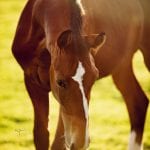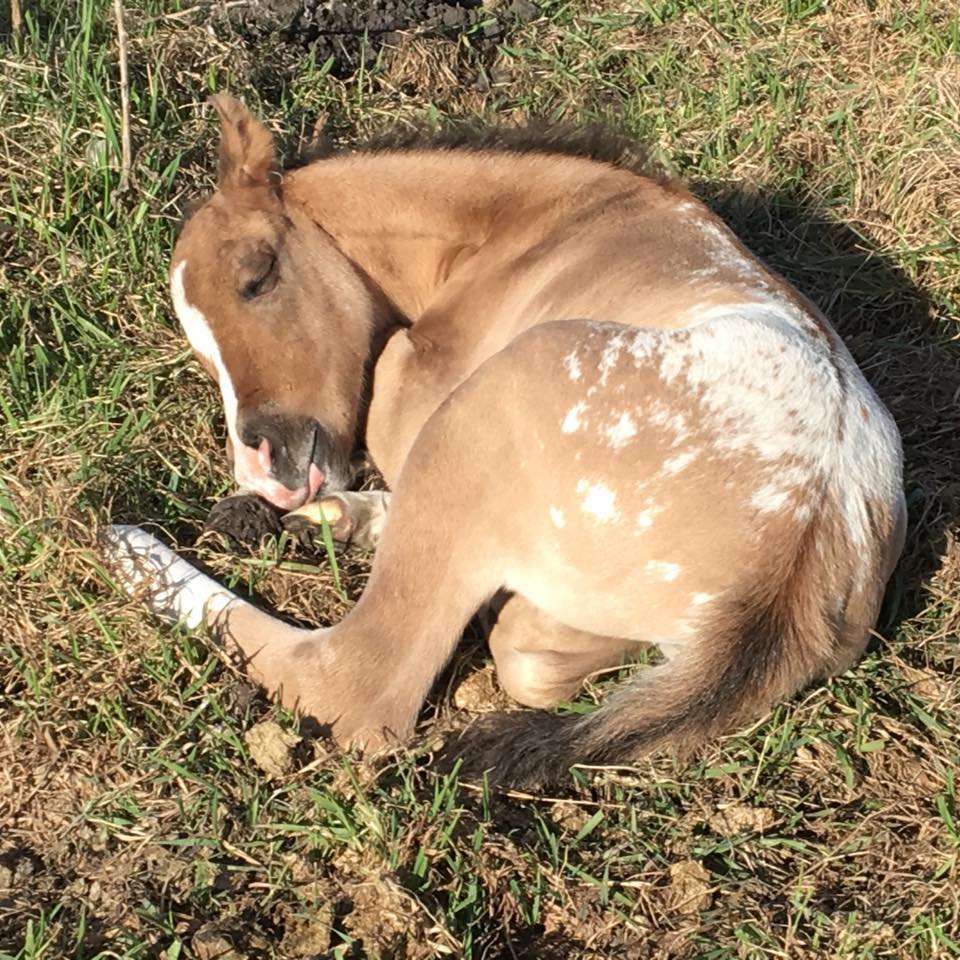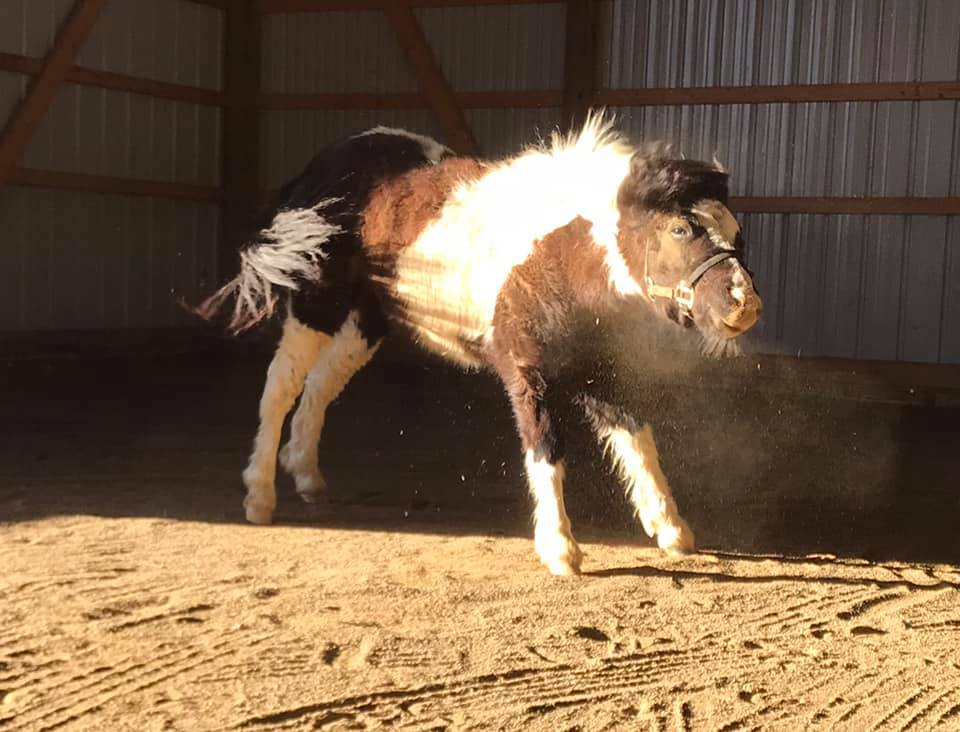Here’s a question that I get on a regular basis: How soon can I start working my pony?

There are many variations on this them. They want to know what they should be doing with their 3 year old horse that they’ve been driving all summer, the 2 year old that they’re already riding, and the 18 month horse that they’ve already had harness on.
Is it just me, or has everyone forgotten that starting horses very young is a bad thing?
When I say “very young”, I mean under 4 years old. For some reason, that age doesn’t enough strike people as “very young.”
Here’s my standard response for those asking what they should be doing with their yearling, 2 year old, and even those ponies that just turned 3:
Feed, Groom, Turnout, Repeat
Outside Influences
There are several reasons that this comes up a lot. After all, Thoroughbreds race at 2 years old, which means they are less than 2 when they start training. The list of other breeds and disciplines that dictate putting very young horses to work would be too long to list here.

Bear in mind that the people in those equations have tremendous financial pressure to produce a working horse by the time it is 2 years old. Those decisions have more to do with balance sheets than the long-term welfare of the horse.
Don’t get me wrong. I fully understand that people in those industries have to make a living. In many cases, the option of waiting until horses are 4 years old just isn’t a reasonable option. The most successful breeders have specific training programs that account for the horse’s welfare as much as possible in those circumstances (of course we can all point to many examples that are inhumane.)
That said, you can’t ignore basic biology. The bones of horses don’t fully develop in 2 years. Sure, there are bones that are really solid in that time frame, but the whole skeletal structure of the horse takes more in the range of 6 years to fully develop.
Most people who own horses and ponies as family companions plan to have those horses for a lifetime. Even if they will not own the horse for his entire 20+ year lifespan, they are concern for his well-being as an adult.
In a lifetime of 20+ years, waiting an extra year or two to start training is a very small investment in the horse’s life. Giving that young horse those extra months for growing when they are young, can make big difference in how well they are able to move when they are old.
But He’s So Good!
I think the tough thing is that these horses and ponies are our companions, and family members. That feeling of kinship erodes people’s prospective of just how young these animals really are.
It doesn’t really matter how well they are responding on the outside to your training. Their bones don’t really care. If the bone is not hardened, it’s not hardened.
The effect that an early start has on a horse’s mental and emotional development is harder to quantify as objectively as they physical challenges.
Pocket Ponies
These are the ponies and horses that always want to be right inside their person’s hip pocket. If they could be lap-horses, they would gladly do so.
They never get corrected from this behavior “because they’re so cute” and “it’s endearing.” It’s also endangering.
The fact of the matter is, even a mini clocks in around two or three hundred pounds. Ponies are in the four to seven hundred pound range, and horses can be as much as eleven or twelve hundred pounds.
Our laps were not made to support several hundred pounds. If the pony or horse’s answer to an anxious moment is to jump into their human’s lap, it’s not going to go well for anyone.
Pocket ponies and horse know no boundaries when it comes to their human companions. In these circumstances the fencing in the fields do more to keep the ponies out of the house than keep them in the fields.
Without boundaries, discipline is almost non-existent. When a horse has been raised to be allowed to do anything they want for 2-3 years, it’s very difficult when their companion human asks for specific tasks.
So What Should You Do?
When your horse is a yearling, let him be a yearling. He only gets to be that old once. If he can be lead to and from his stall, he’s accomplished all of his training goals for that year. Give him lots of turnout, good nutrition, lots of love.
As a two year old, perhaps your horse should stand for some occasional grooming. Standing can be a difficult thing for light bred horses and ponies of this age, so keep those sessions short. If they can learn to cross-tie, that’s a good place to start.
As a three year old, now the leading and standing should become more important. Even if you never plan to take your horse in a halter class, training as if you were can be very valuable. Getting that young horse to pay attention to you, and follow your orders will be critical when starting them.
It’s not until the autumn of the horse’s third year that I begin to contemplate “putting the horse to work.” That usually comes in the form of introducing harness and a bit on the halter. I’ll do a little longeing, light long lining, and some ground driving. If things are going really well, I may introduce the carriage into the work.
All of these things are done in lightweight, short sessions. Remember, it’s always better to quit while you’re ahead!
The Secret is in the Pause
Here in New England, fall is a great time to get started because there’s a built-on break in work coming on the calendar. Holidays and winter weather almost always puts a pause on training activities.
Around here, it’s march before anyone wants to think about ponies again. The nice thing is, they have a coming four year in the barn who’s had a nice little introduction to work.
That break in training at the start is where all of the magic happens. I don’t know what it is, but in that pause in training, the horses seem to consolidate the work that we did with them before the pause. They seem to return to work with new insight.
I’ve seen it happen with dozens of horses. The horses that get a break at the beginning of their training seem to breeze right on by their counterparts who never got that pause.
Feed, Groom, Turnout, Repeat
So if you have a very young horse or pony in your barn right now, please take my advice. Feed, groom, turn out, repeat. Keep your hands off the cuteness until they are getting ready to turn four.
If you must do something because you can’t possibly not touch them, work on stand training, and maybe do a little work as if you were going to do some halter classes. That is all, no more!
If you love your dear pony or horse as much as you say you do, you’ll have him for another 20+ years together. The patience you show now will pay off in the long run 10-fold.





Excellent article for anyone who trains horses. Thank you for the insight and the skeletal drawing showing the ages of final development.